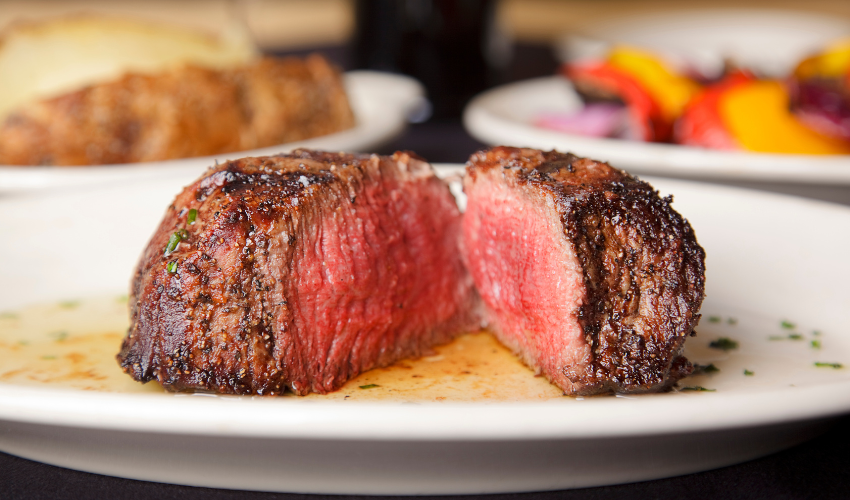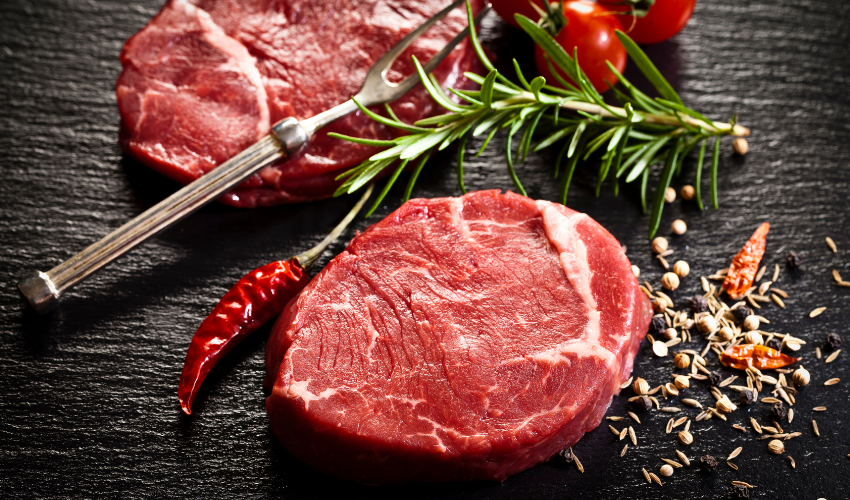Filet mignon is a popular steak that has been appreciated by connoisseurs of fine dining for decades. The name “filet mignon” is derived from French, meaning “dainty fillet” or “fine fillet.” It is a cut of beef that is taken from the tenderloin of the cow, and it is known for its tenderness, succulence, and exceptional flavor. In this article, we will explore what is so special about filet mignon that makes it one of the most sought-after cuts of meat in the world.
What is so special about filet mignon?
- The Texture
One of the defining features of filet mignon is its texture. It is an extremely tender cut of beef, thanks to the lack of connective tissue that makes it tender and easy to cut. When cooked correctly, filet mignon practically melts in your mouth, providing an unforgettable culinary experience.
- The Flavor
Mignon is also known for its exceptional flavor. It has a delicate taste that is not as overpowering as other cuts of beef. The meat is relatively lean, with a minimal amount of fat, making it ideal for those who are health-conscious or looking for a leaner meat option. Filet mignon is often seasoned with simple herbs, salt, and pepper, allowing its natural flavor to shine.
- The Versatility
Mignon is incredibly versatile and can be cooked in several ways. It can be grilled, pan-seared, or broiled, depending on the desired level of doneness. It can also be paired with a variety of sauces, such as mushroom sauce or red wine sauce, to enhance its flavor further.
- The Presentation
Filet mignon’s presentation is also a factor that adds to its appeal. The cut is often served in thick, juicy slices, and it looks elegant and sophisticated on the plate. Its delicate taste, tenderness, and texture also make it a favorite among steak lovers.
- The Price
Another factor that contributes to mignon’s allure is its price. It is a premium cut of beef, which means it is often more expensive than other types of steak. Its rarity, tenderness, and flavor make it a sought-after delicacy, and its price tag adds to its exclusivity.

The Origins of Filet Mignon:
Mignon has a rich history that dates back to the 1800s. It was originally considered a secondary cut of meat, and it was often used to make beef Wellington, a dish that became popular in England during the 1800s. However, over time, it gained popularity as a standalone steak, thanks to its tenderness and flavor.
How to Cook Filet Mignon:
Mignon is a delicate cut of meat that requires proper cooking techniques to preserve its texture and flavor. Here are some tips for cooking filet mignon:
- Start with High-Quality Meat: Look for filet mignon that is bright red in color and well-marbled with fat. This indicates that the meat is fresh and flavorful.
- Let it Rest: Before cooking, let the meat come to room temperature for about 30 minutes. This will ensure even cooking and prevent the meat from seizing up.
- Sear it Well: Heat a cast-iron skillet or grill over high heat and add a generous amount of oil or butter. Sear the meat on all sides until a crust forms, then lower the heat to finish cooking to your desired doneness.
- Use a Meat Thermometer: To ensure that your filet mignon is cooked to your liking, use a meat thermometer to check the internal temperature. For medium-rare, aim for 130-135°F, while medium is around 140-145°F.

FAQs:
Is filet mignon the healthiest cut of beef?
While mignon is leaner than other cuts of beef, it still contains saturated fat and cholesterol. However, it can be part of a healthy diet when consumed in moderation and balance.
Can mignon be cooked on a grill?
Yes, mignon can be cooked on a grill. Follow the same searing technique mentioned earlier and then transfer it to a cooler part of the grill to finish cooking.
How should I season my filet mignon?
Since mignon has a delicate flavor, it’s best to keep the seasoning simple. A sprinkle of salt and pepper is all that’s needed to enhance the natural taste of the meat. You can also add herbs like thyme or rosemary for extra flavor.
Can I cook filet mignon in the oven?
Yes, mignon can be cooked in the oven. Preheat the oven to 425°F, sear the meat in a skillet as mentioned earlier, and then transfer it to the oven to finish cooking for 5-10 minutes.
What sides go well with filet mignon?
Some classic sides that go well with mignon include roasted vegetables, mashed potatoes, creamy spinach, and garlic bread.
How should I store leftover filet mignon?
If you have any leftover mignon, store it in an airtight container in the refrigerator for up to 3-4 days. To reheat, gently warm it in a skillet or oven until heated through.
Conclusion
Filet mignon is a cut of beef that lives up to its reputation. Its tender texture, mild flavor, and elegant presentation make it a popular choice for special occasions or upscale dining. While it may be pricier than other cuts of beef, the indulgence is worth it for the sensory experience it provides. So why not treat yourself to a delicious filet mignon and savor every bite of this special steak?






















